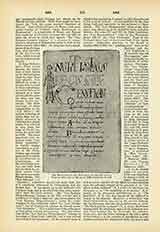

Lesueur, FRANCOIS EUSTACHE, Jesuit missionary and philologist, of the Abnaki mission in Canada; b. (according to notes given by Thwaites, apparently from official sources) near Coutances, Normandy, July 22, 1685 or 1686, though Maurault gives his birthplace as Lunel, in Languedoc; d. at Montreal, 28 or April 26, 1760, or (according to Maurault) at Quebec, in 1755. Although the principal facts of his work and writings are well known, there is remarkable uncertainty as to dates, places, and even his proper name. This uncertainty is probably largely due to the burning of the St. Francis mission, with all its records, by the English in 1759. He entered the Jesuit novitiate in 1704 or 1705, arrived in Canada in 1715 or 1716, studied the language for some months at the Abnaki mission of Sillery, and then began work at St. Francis, the principal Abnaki mission, remaining there until 1727 or later. He was at Montreal in 1730 and during 1749-54. According to Maurault, he arrived in Canada in June, 1715, and after a short stay at Sillery was sent to Becancour, another Abnaki mission, on the St. Lawrence, where, with the exception of occasional parochial service, he remained until 1753, when he retired to Quebec. The name is variously given as Francois Eustache (Maurault), Jacques Francois (Thwaites), and Jacques (Calumet Dance MS.). In connection with his study of Indian things, he wrote, besides prayers, sermons, etc., in the Abnaki language, a valuable account of the celebrated Calumet Dance, which gave so much trouble to the early missionaries. The original French manuscript is preserved at St. Francis mission, Pierreville, Canada, and was published in the “Soirees Canadiennes” of 1864. Manuscript copies are in St. Mary’s College, Montreal, and with the Wisconsin Historical Society, Madison. According to Maurault, he compiled also a Dictionary of Abnaki, of 900 pages, still in existence, but we are not told where the manuscript is preserved.
JAMES MOONEY

